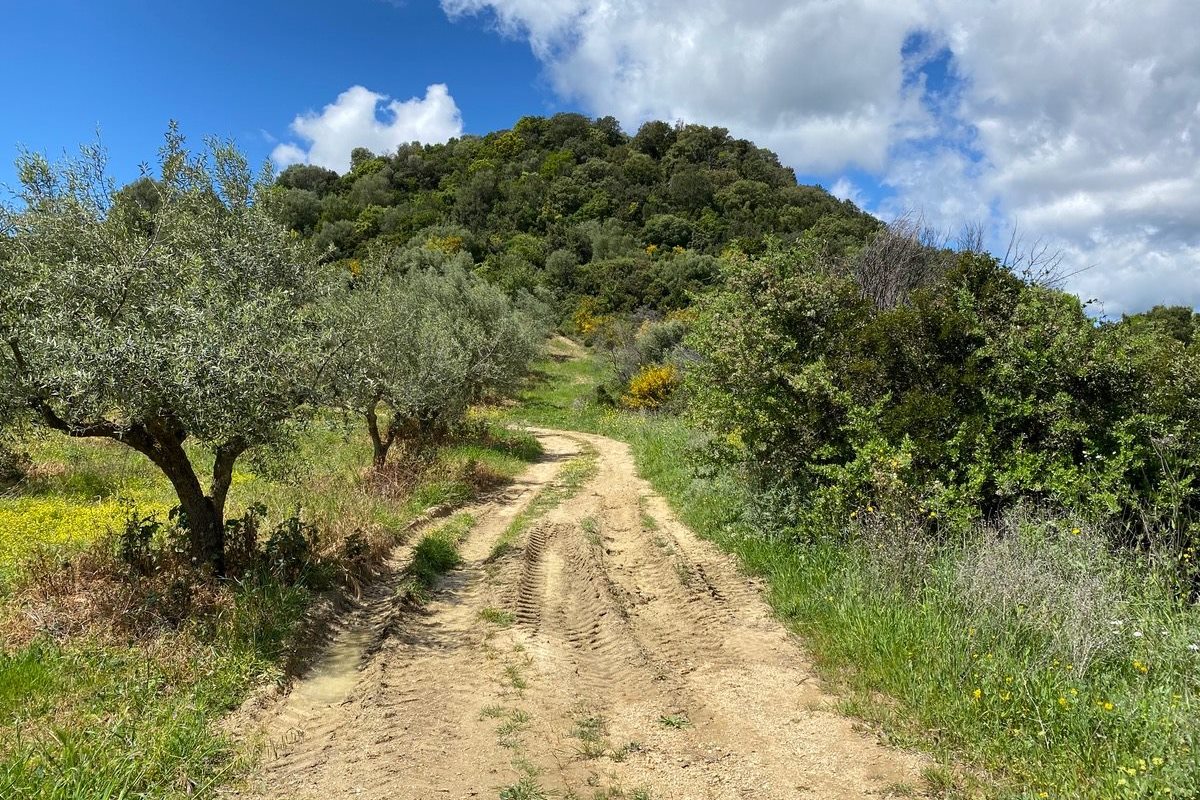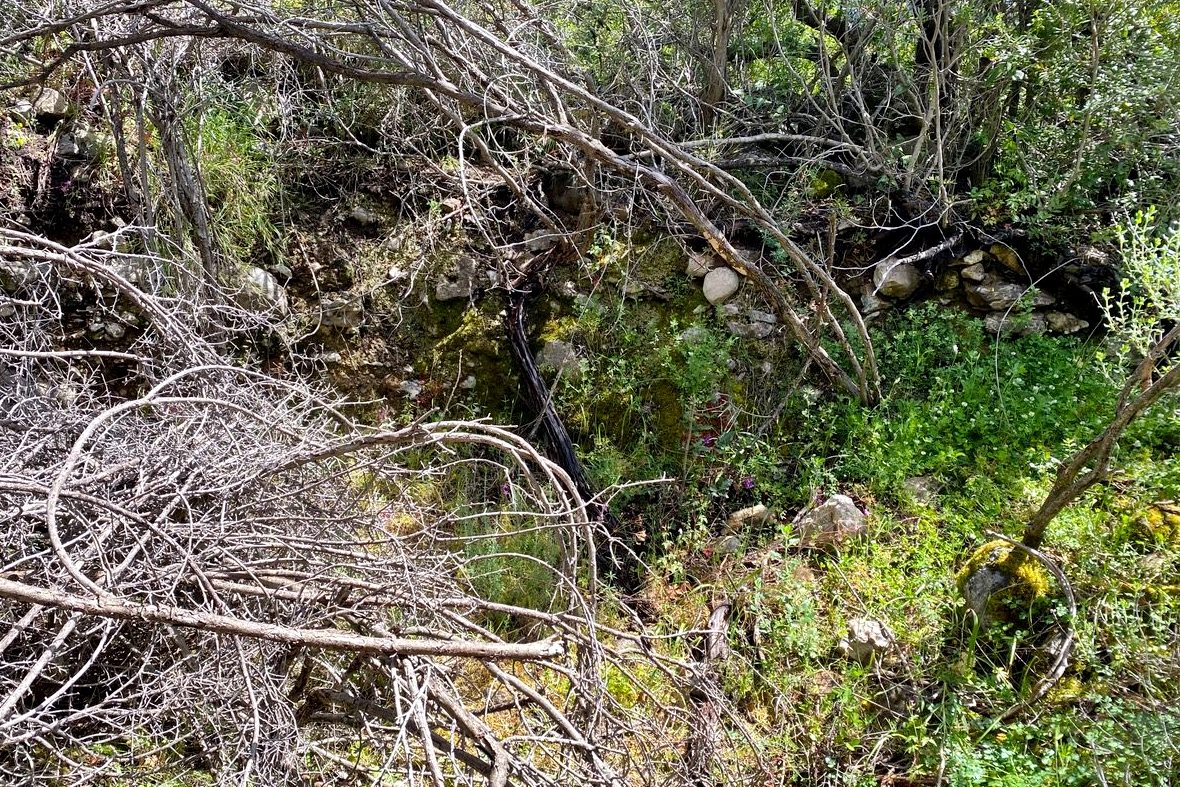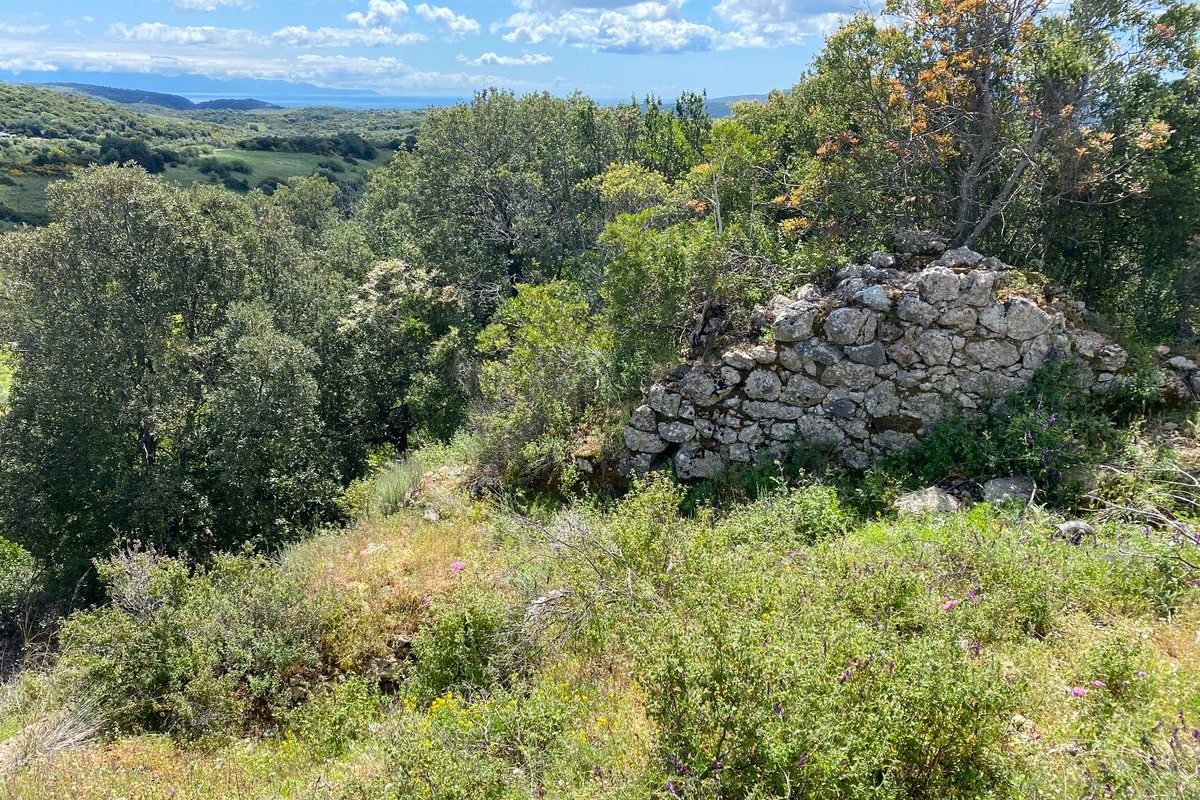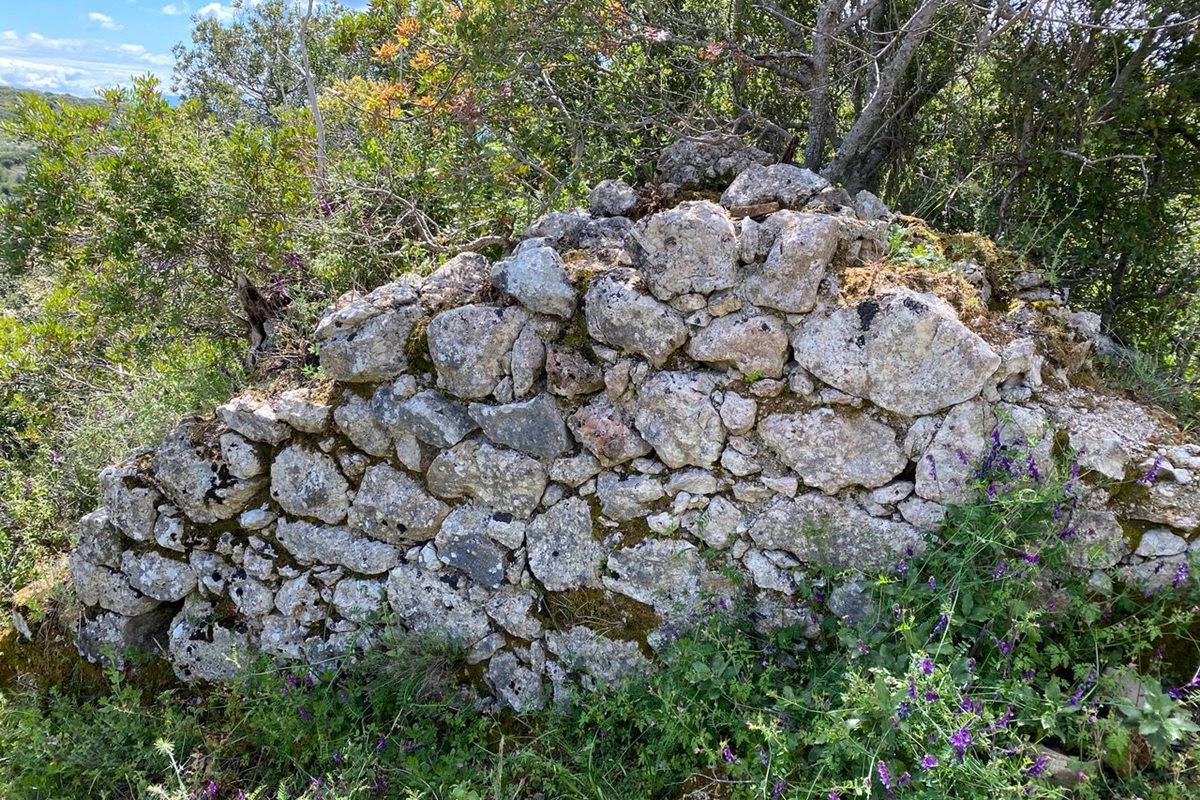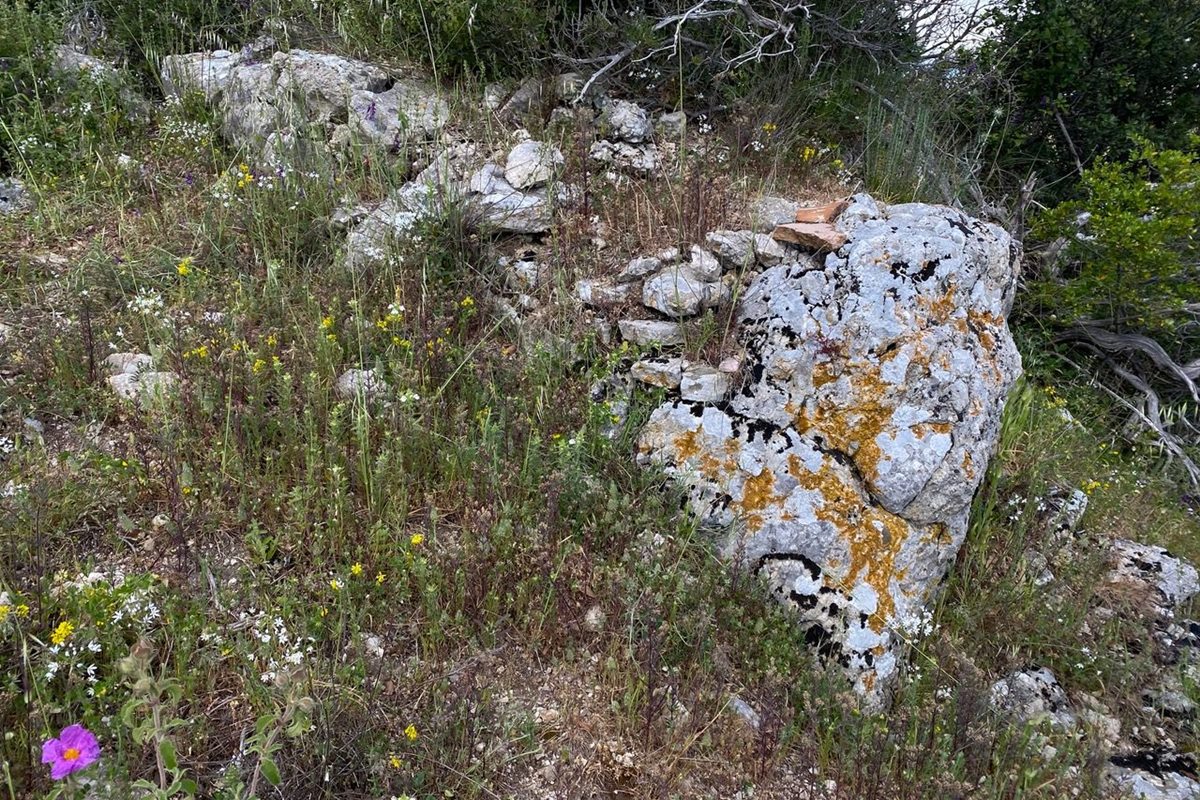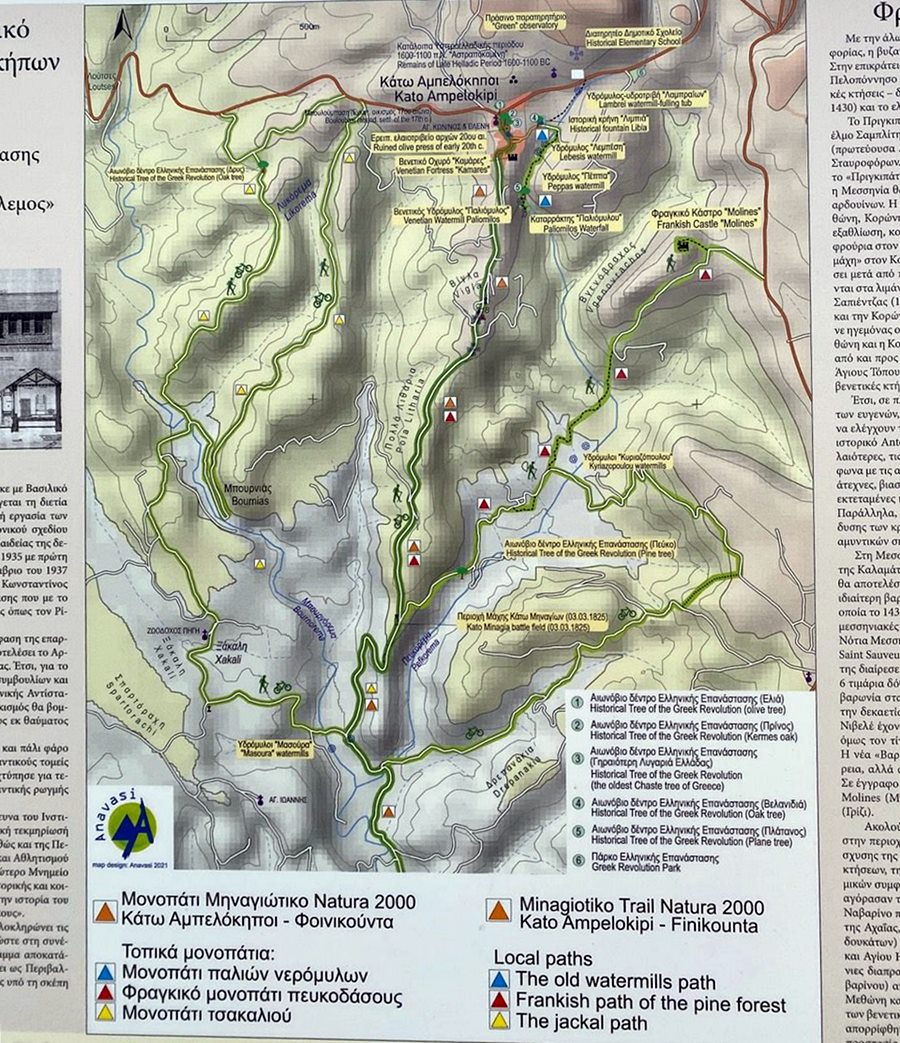Kato Ampelokipoi, Pylos - Nestor, Messenia,Peloponnese
Bourtzi of Ampelokipi
| Location: |
| On a hill SE of the village Kato Ampelokipoi of Messinia |
| Region > Prefecture: | 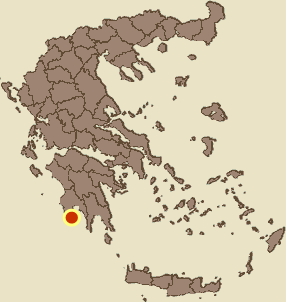 |
| Peloponnese Messenia | |
| Municipality > Town: | |
| City of Pylos - Nestor • Kato Ampelokipoi | |
| Altitude: | |
|
Elevation ≈ 355 m (Relative Height≈40 m) |
| Time of Construction | Origin | |
| perhaps 14th-15th cent. | VENETIAN |
|
| Castle Type | Condition | |
| Ruined Tower |
Few Remains
|
A few indistinguishable ruins of medieval buildings –which probably include fortification remains– on a verdant hill 1 km SE of the village of Kato Ampelokipoi, in Messinia.
The local name of the area is Vgena and the name of the hill is Bourtzi or Vgenovrachos.
History
The history of the fortification is not known. First of all, it is not certain that there was indeed a fortification on the hill, since on there is no information from historical sources and the surviving ruins do not clearly look like a tower or a castle.
But the general impression is that the ruins are indeed castle remains. This impression is created by the natural defensive position and mainly due to the strange place name “Bourtzi” (which, in Greece, is another name for seaside towers).
What is certain is that today’s Ampelokipi (Ano and Kato) existed at least from the time of the Second Venetian Occupation and are recorded as Apano Menagia and Cato Menagia in the Census of the Providatore Corner, 1689, and as Menaghia alta and Menaghia bassa in the Grimani census, 1700.
This of course does not prove anything, as the Cato Menagia were probably in the place of the present village and not on the Bourtzi hill.
It should also be mentioned that on local websites as well as on the village information board the castle is referred to as Molines or Molendini. A castle with this name is mentioned in the various lists of castles during the Frangokratia, but it remains unidentified. Bourtzi of Ampelokipoi may be Molines, but this is not confirmed with certainty. It is possible that Molines was in another area where there were watermills (Molines = mills).
According to the Molines hypothesis, the construction dates back to the late 14th to early 15th century, when the area belonged to the Venetians (First Venetian period). But, as mentioned above, the identification with Molines is not at all certain. The only sure thing is that the ruins are medieval judging by the use of mortar in the masonry and the few surface ceramic finds.
Structure, Fortification & Buildings
The hill is quite steep and is accessible only from the east side. Access is difficult due to the dense vegetation.
On the hill there are scattered ruins that show that there was a medieval settlement here and probably some fortification. The most remarkable remains are a rectangular building near the top.
In the summer of 2003, the 5th Ephorate of Byzantine Antiquities, conducted an autopsy on the hill of Bourtzi and concluded as follows:
“This area is naturally fortified, as it has access only from the east side, while the other sides are steep. The hill offers the possibility of observing a large area around it. It has direct visual contact with the hill of Ag. Nikolaou, between Pylos - Methoni, the mountain range of Lykodimos, as well as a large part of the area of Koroni. It is therefore in a position suitable for the development of fortifications.
At the top of the hill, amidst intense vegetation, the remains of a square structure can be seen, built with particularly strong masonry made of stone. The building is preserved at the level of foundations and at a maximum height of + - 0.50m., And thickness + - 0.60m. No traces of openings, floor or other elements can be seen.
At the perimeter of the hill are also preserved sections of masonry which follow the path of the rock [obviously a remnant of a fortification]. The best-preserved part is located on the west side: it reaches a length of about 10m., at a height of ca. 2m. and with a thickness of 0.60m.
| First entry in Kastrologos: | May 2022 |
Sources
- Info and pictures by Nick Collins
- Δημοσθένης Κορδός άρθρο στην εφημερίδα ΕΛΕΥΘΕΡΙΑ με τίτλο «Η απαρχή της κυριαρχίας των Βενετών στην Μεσσηνία (1204-1209)», 11 Ιουνίου 2017
- Blog Αριστομένης ο Μεσσήνιος - Μεσαιωνικό οχυρό: "Λοφίσκος Μπούρτζι"- Κάτω Αμπελόκηποι
|
|
| Access |
|---|
| Entrance: |
| Free but difficult access |



